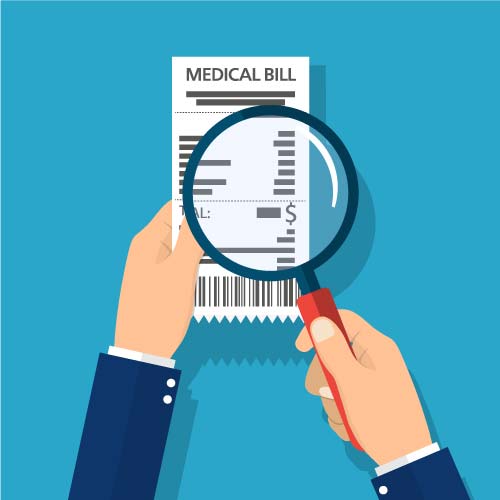How to Stop Paying for Billing Mistakes: Use an Auditing Technology Platform
Medical billing mistakes are occurring at an alarming rate–external sources claim anywhere from 30 to 80 percent of medical bills could have some type of inaccuracy. Since many payors don’t have the most effective systems in place to identify billing issues, these errors are potentially costing them millions of dollars. Using a technology platform instead of manual reviews can help payors feel more confident in their process to catch errors and abuses in billing, which can help them stop paying for mistakes.
Why Manual Audits Aren’t Enough to Catch Billing Mistakes
Many payors employ nurses to manually review a wide range of bills for mistakes that span from simple error types to issues that are too complex for even the most advanced bill review platform to catch. In general terms, bills are queued by dollar threshold, specific bill types or problematic codes for nurse review. Nurses are looking for errors related to NCCI edits, diagnosis codes, data entry errors, improper modifier usage, and more. While these nurses are highly trained professionals, they are limited by the manual review process and can therefore only review a small amount of bills in one day. Relying on a small team of specialized medical experts to validate an endless volume of bills is not scalable, and often leaves payors to pay bills in full that were not audited for errors. In contrast, an auditing technology platform can quickly scan bills, make corrections where appropriate and pass along a limited number of complex bills for a more detailed review by nurses, which is a much more valuable use of their time. Using a technology platform instead of relying on manual processes can help payors reduce overhead costs, improve efficiency and improve cost containment.
An auditing technology solution can help payors achieve their goal of paying a fair and accurate price for services rendered for their claimants.
How Does an Auditing Technology Platform Work in Correcting Billing Mistakes?
to the traditional bill review process and not a replacement. The auditing technology platform scans medical bills that would typically require a nurse-level review to help catch billing mistakes and identify abusive billing practices. After this pre-validation step, the platform makes corrections on bills and will send any bill with additional errors that the platform can’t rectify for additional investigation by authorized experts. The auditing technology platform is based on rules and regulations from NCCI, fee schedule, Medicare and so on. Unfortunately, this does not catch all errors and misses bills when billing games are played. To take this a step further, auditing platforms need to consider combining medical domain knowledge with the technology to automate medical intelligence. Machine learning and AI will be the next leap forward in transforming auditing solutions in the industry.
The Impact of Implementing an Auditing Technology Platform
There are many advantages to adding an auditing technology platform to a workers’ compensation claims workflow, including improving efficiencies and reducing overhead costs—but cost containment is where the platform will have the biggest impact. Implementing an auditing technology solution could save payors an average of four to six percent on their overall spend. More specifically, payors could potentially save 35 to 45 percent, or an average of $3,986 on facility bills that are impacted by the audit. In addition, an auditing solution could potentially help save an average of $490 per impacted professional surgical bill and an average of $106 per impacted code review.

Implementing an auditing technology solution could save payors an average of four to six percent on their overall spend. More specifically, payors could potentially save 35 to 45 percent, or an average of $3,986 on facility bills that are impacted by the audit.
Mitchell recently saw these results first hand when we implemented our auditing technology platform into an internal manual nurse audit workflow. In this case, the auditing platform prescreened medical bills, identified errors, applied comprehensible edits and fagged only complex bills for nurse review. This resulted in a significant decrease in the number of bills the nurses received to review each day. The platform still provided savings on the non-complex bills that were not sent to the nurses but still had some type of error. Overall, we were able to increase nurse efficiency by 88 percent and average savings by more than 77 percent.
There are many advantages to adding an auditing technology platform to a workers’ compensation claims workflow, including improving efficiencies and reducing overhead costs—but cost containment is where the platform will have the biggest impact.
An auditing technology solution can help payors achieve their goal of paying a fair and accurate price for services rendered for their claimants. A technology platform can help payors to audit a much higher percentage of the medical bills they receive—helping payors identify more errors and feel more confident that they are not paying for billing mistakes.


